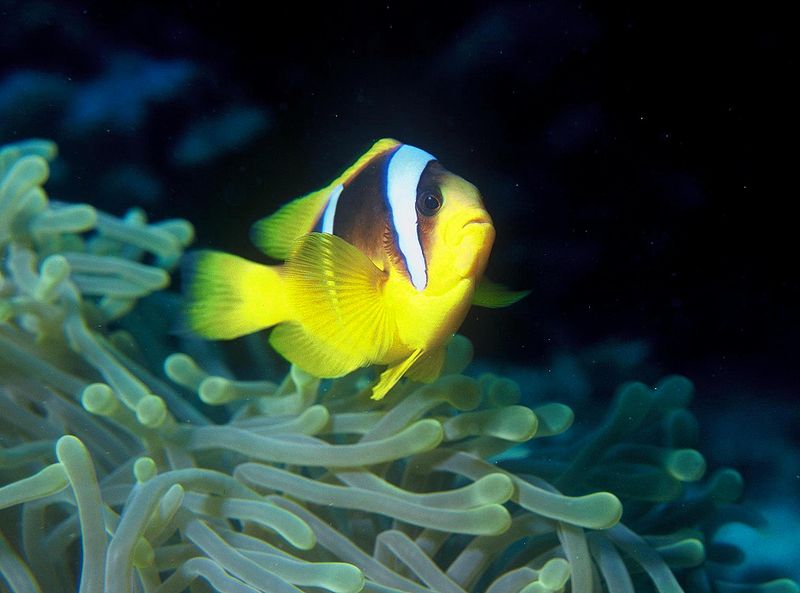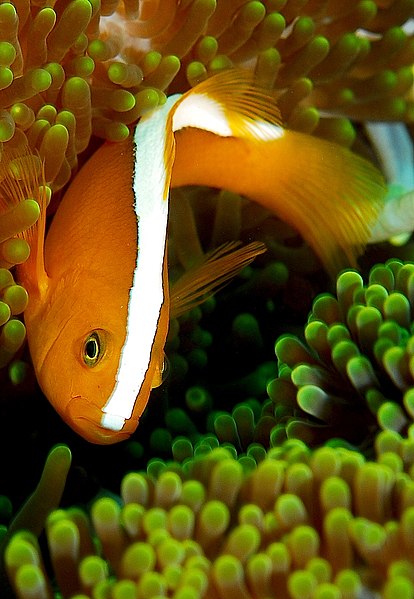Please welcome back Steven Pro to That Fish Blog. 
There is a breed of reef keepers that strives to setup their systems in such a way as to as closely as possible replicate nature. They use live rock, live sand, refugiums with macroalgae, seagrasses, or mangroves, and they spend large quantities of money in lighting that replicates the power of the sun in the tropics. They also invest a lot of time, money, and effort into maintaining optimum water quality and yet it is this very water, the basic foundation of any marine system, in which most reef keepers depart from this preference for all things natural. The vast majority of these reef keepers instead use a synthetic salt mix.

Not to say there are not some good reasons for this. Very few of us are lucky enough to live close enough to the coast to use natural seawater. And for those that are, this is not always the best choice. Our coastal waterways are often polluted by agricultural runoff, industrial pollution, nutrients, and other man-made sources that render this water inappropriate for aquarium use. There are some companies that are now bottling saltwater from (hopefully) clean sources, but at today’s high fuel prices, transporting water at 9 pounds per gallon is not the most cost effective option. That is where the Red Sea line of salt mixes can come into play.
Red Sea makes two brands of dry salt mix. But, in contrast to most every other manufacturer, Red Sea does not use terrestrially mined components to create an artificial salt mix. Instead, they evaporate salt out of the Red Sea to recreate Mother Nature. Starting with water that is drawn from an actual reef near Eilat, Israel in the Red Sea, the water is evaporated using the power of the sun as well as the dry air from the surrounding desert. Because the entire area is a desert, there is little rain and therefore little runoff. Point of fact, the Eilat area gets little more than 1” of rainfall per year. This coastline also has very little industry or agriculture leaving the surrounding water comparatively pristine. The resulting dried salts are then screened, cleaned, and chemically analyzed. At this point, the salt is 87% complete. There are some compounds that once precipitated out of solution, won’t re-dissolve when hydrated again. These are added back to the salt mix in ionic form. At this point, a final quality control, chemical analysis is completed and if the product passes, it is packaged for sale.
As I mentioned before, Red Sea makes two brands of salt. There is the classic Red Sea salt, which has been around for over 15 years. And now, there is the Coral Pro Salt version. It is specifically formulated for use with reverse osmosis water. Many reef keepers have noticed that when using most salt mixes, the values of things such as pH, alkalinity, calcium, and magnesium might be a bit low when mixed with de-mineralized water. That is because most formulas are designed to be safe for use with tap water. Tap water usually has a certain amount of carbonates, bicarbonates, calcium, and magnesium. When blended with tap water, these salts mix to their appropriate values. But, when added to reverse osmosis water, which has been stripped of these components, the resulting mix is sometimes lacking. Red Sea has heard the complaints of reef keepers worldwide to design a salt specifically for use with reverse osmosis water. When mixed to a specific gravity of 1.025 at 75F, Coral Pro delivers a pH of 8.2, a calcium concentration of 450 parts per million, alkalinity of 2.5 milliequivalents per liter, and a magnesium level of 1,300 parts per million. Even more importantly, because the mix was originally derived from the reef, it also has all of the minor trace elements as well and in their proper, naturally occurring ratios. No elevated metal levels here. Everything is as it was on the real reef. And, in keeping with this natural theme, Red Sea salts also do not contain any EDTA or other binding agents.
Also, in testing done by Eric Borneman and Kim Lowe and presented at the 18th annual Marine Aquarium Conference of North America in Houston, Texas, Red Sea salt tied for “first place” in their general observations. It is with this in mind that I first decided to try Red Sea salts. Actually a funny story, that is why I have the job I do now. I operate as a side business a 7,200 gallon coral and anemone greenhouse propagation facility. I was unhappy with the brand of salt I was using then, so I started to investigate other alternatives. I recalled the MACNA presentation by Eric and Kim and tried to get in touch with their sales representative to buy their Coral Pro salt in quantity. After several attempts in vain, I discovered that the reason I could not reach Dave was because he had moved on to another company and Red Sea was currently advertising for his job. I sent them my resume and after an interview, I had a job offer. Now, I am the East Coast Sales Manager for Red Sea and a happy user of their Coral Pro salt in my greenhouse too!
Thanks Steven. If you have any questions about any Red Sea Products or anything else for Steven, feel free to send them along.
Until Next Time,
Dave
 That Fish Blog – Aquarium Advice and Information
That Fish Blog – Aquarium Advice and Information

 Hailing from the Indo-Pacific region (western Pacific and eastern Indian Oceans, including the Great Barrier Reef), this clownfish reaches a length of 3.2 inches in captivity; wild specimens are reported to exceed 4 inches in length, but captive bred animals are generally smaller.
Hailing from the Indo-Pacific region (western Pacific and eastern Indian Oceans, including the Great Barrier Reef), this clownfish reaches a length of 3.2 inches in captivity; wild specimens are reported to exceed 4 inches in length, but captive bred animals are generally smaller. few occur in the Atlantic and Eastern Pacific Oceans. They occupy a startling variety of habitats, with many species restricted to specific depths or specific areas of wave action. Several species can even enter brackish waters.
few occur in the Atlantic and Eastern Pacific Oceans. They occupy a startling variety of habitats, with many species restricted to specific depths or specific areas of wave action. Several species can even enter brackish waters. Anemone tentacles fire their sting-bearing cells (nematocysts) upon contact with any organism that they come in contact with. The tentacles are coated with mucus which inhibits them from stinging one another. It seems that the clownfish secretes mucus which mimics that covering the tentacles of the anemone. Therefore, the anemone simply does not recognize the clownfish as prey, or even as a distinct organism!
Anemone tentacles fire their sting-bearing cells (nematocysts) upon contact with any organism that they come in contact with. The tentacles are coated with mucus which inhibits them from stinging one another. It seems that the clownfish secretes mucus which mimics that covering the tentacles of the anemone. Therefore, the anemone simply does not recognize the clownfish as prey, or even as a distinct organism! Another weapon-bearing crustacean, the boxing crab (Lybia tessellata), goes through even greater lengths to arm itself with stinging anemones. This tiny (2.1 inch) fellow has the fascinating habit of carrying small anemones about in its claws. When threatened, it will rear up on its hind legs and wave the “weapons” at the interloper!
Another weapon-bearing crustacean, the boxing crab (Lybia tessellata), goes through even greater lengths to arm itself with stinging anemones. This tiny (2.1 inch) fellow has the fascinating habit of carrying small anemones about in its claws. When threatened, it will rear up on its hind legs and wave the “weapons” at the interloper! The ever-popular arrow crab (Sterorhynchus seticornis) is more concerned about food supply than weaponry, and impales food upon its pointy carapace. This is quite comical to see, because, due to the location of the spine, the crab seems to be carrying food about on the tip of its nose! The stored food is consumed when the crab is safe within a retreat, or in times of need.
The ever-popular arrow crab (Sterorhynchus seticornis) is more concerned about food supply than weaponry, and impales food upon its pointy carapace. This is quite comical to see, because, due to the location of the spine, the crab seems to be carrying food about on the tip of its nose! The stored food is consumed when the crab is safe within a retreat, or in times of need.